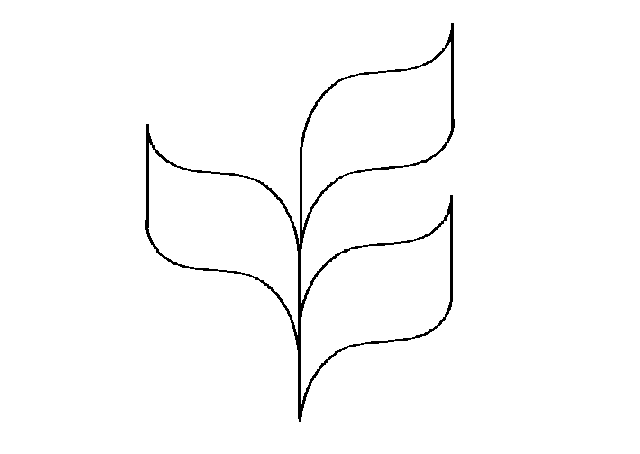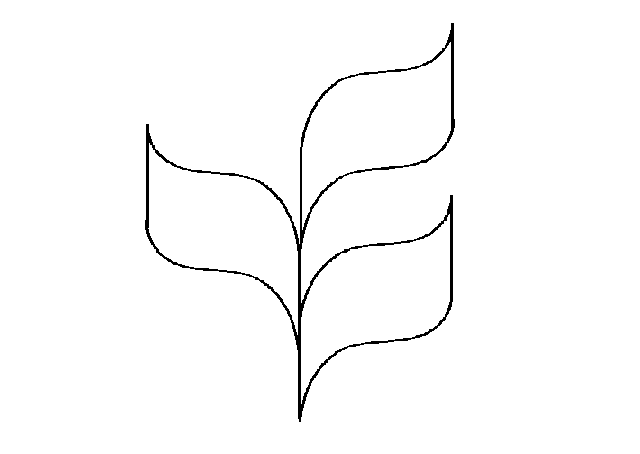1272021 0 DRAFT 1 CBD CONVENTION ON BIOLOGICAL DIVERSITY
1272021 0 DRAFT 1 CBD CONVENTION ON BIOLOGICAL DIVERSITY
PROPOSED JOINT WORK PROGRAMME BETWEEN THE CBD AND CCD ON BIOLOGICAL DIVERSITY OF DRY AND SUB-HUMID LANDS
|
|
|
CBD
|
|
|||
|
|
CONVENTION ON BIOLOGICAL DIVERSITY |
|
Distr. GENERAL
UNEP/CBD/COP/7/INF/28 12 January 2004
ENGLISH ONLY |
|||
CONFERENCE OF THE PARTIES TO THE CONVENTION ON BIOLOGICAL DIVERSITY
Seventh meeting
Kuala Lumpur, 9-20 and 27 February 2004
Item 17 of the provisional agenda*
Thematic PROGRAMMES OF WORK: progress reports on implementation and consideration of proposals for future action: Biological diversity of dry and sub-humid lands
Joint work programme on the biological diversity of dry and sub-humid lands between the Convention on Biological Diversity and the United Nations Convention to Combat Desertification
Note by the Executive Secretary
1. The Executive Secretary is circulating herewith, for the information of participants in the seventh meeting of the Conference of the Parties of the Convention on Biological Diversity, the agreed joint work programme on dry and sub-humid lands between the Convention on Biological Diversity and the United Nations Convention to Combat Desertification (UNCCD). The joint work programme was developed pursuant to paragraph 8 of decision V/23, based on elements submitted to the Conference of the Parties at its fifth meeting (UNEP/CBD/COP/5/INF/15). A liaison group constituted of national focal points of both conventions and the convention secretariats drafted the joint work programme at a workshop in May 2001 (UNEP/CBD/SBSTTA/7/4). Subsequently the programme was finalized and agreed to by the two secretariats in September 2002, during the second meeting of the Ad Hoc Technical Expert Group on Dry and Sub-Humid Lands in Montreal. It was also noted by the eighth meeting of the Subsidiary Body on Scientific, Technical and Technological Advice. The sixth meeting of the Conference of the Parties of the UNCCD, which took place, in Havana, Cuba, 25 August to 5 September 2003, welcomed the joined work programme, and invited Parties to the UNCCD to take the necessary measures to ensure its effective implementation, particularly at the local level.
2. The joint work programme is being circulated in the language and the form in which it was agreed between the two secretariats.
CBD UNCCD

JOINT WORK PROGRAMME (JWP) BETWEEN THE SECRETARIAT OF THE CONVENTION ON BIOLOGICAL DIVERSITY AND THE SECRETARIAT OF THE CONVENTION TO COMBAT DESERTIFICATION ON THE BIOLOGICAL DIVERSITY OF DRY AND SUB-HUMID LANDS
I. BACKGROUND
1. The Conference of the Parties of the Convention on Biological Diversity, in its decision IV/16, decided that dryland, Mediterranean, arid, semi-arid, grassland and savannah ecosystems will be one of the three items for in-depth consideration at its fifth meeting. At its fifth meeting, the Conference of the Parties adopted the draft work programme for dry and sub-humid lands (decision V/23).
2. At its fifth meeting, the Subsidiary Body on Scientific, Technical and Technological Advice (SBSTTA), prepared a programme of work on the biological diversity of dryland, Mediterranean, arid, semi-arid, grassland and savannah ecosystems for the consideration of the Conference of the Parties at its fifth meeting (recommendation V/8, annex) and recommended that the Conference of the Parties should request the Executive Secretary to collaborate with the Secretariat of the Convention to Combat Desertification in the implementation of the programme of work, including through the development of a joint work programme between the two conventions. This was emphasized by the Conference of the Parties in its decision VI/4.
3. In compliance with the decisions mentioned above and, in particular with decision IV/15 of the Conference of the Parties, the secretariats of the two conventions signed a Memorandum of Cooperation in July 1998, which addresses institutional cooperation, exchange of information and experiences, coordination of programmes of work, joint actions, liaison arrangements and consultation, reporting and further guidance.
4. Further to this, the Conference of the Parties to the Convention to Combat Desertification in its decision 13/COP.1 and decision 8/COP.2 requested the Secretariat of the Convention to Combat Desertification to pursue the development of synergies and collaboration with the other Rio conventions, in particular the Convention on Biological Diversity, in support of the implementation of the Convention to Combat Desertification. The Secretariat of the Convention to Combat Desertification presented to its Conference of the Parties at its third session details on ways and means of exploring further existing synergies in implementation between the environmental conventions, in particular the Convention on Biological Diversity, while addressing the scientific and technical linkages between desertification and biodiversity, climate change, forests and wetlands. The Conference of the Parties, at its third session, through decision 17/COP.3 requested the Executive Secretary of the Convention to Combat Desertification to continue consultations with the executive secretaries of other relevant conventions, in particular the Convention on Biological Diversity, and to give special attention to the ongoing initiatives with the Convention on Biological Diversity in the programme of work on the biodiversity of dry and sub-humid lands.
5. Within the framework of the Memorandum of Cooperation between the two conventions, in particular its Article 3, which provides that the two secretariats will exchange their annual work programmes to identify those areas where collaboration and coordination would be advantageous, and develop a joint work programme for these activities, the two secretariats prepared elements for a joint work programme (UNEP/CBD/COP/5/INF/15), which the Conference of the Parties to the Convention on Biological Diversity endorsed at its fifth meeting.
6. The two Secretariats organized a meeting of a Liaison Group in Bonn, Germany, from 30 April to 3 May 2001 for additional guidance in the areas of priority which the joint work programme form. At the end of that meeting, the two Secretariats agreed on elements listed under four headings, based upon the suggested elements identified in document UNEP/CBD/COP/5/INF/15.
(a) Assessments;
Targeted actions for conservation and sustainable use of biological diversity; and enabling activities; and
(c) Joint reporting.
7. The joint work programme will benefit from ongoing activities under the both conventions as well as from other agreements and programmes. Not all activities of the programme of work as prepared by SBSTTA will necessarily be addressed in this first phase (2001–2005). The activities selected are those in which maximum synergy might be expected by joint or shared action of the two secretariats.
II. PROGRAMME OF WORK ON BIOLOGICAL DIVERSITY OF DRY AND SUB-HUMID LANDS
8. At the fifth meeting of the Conference of the Parties (COP) of the Convention on Biological Diversity held in Nairobi, Kenya in 2000, a draft programme of work on biological diversity of dry and sub-humid lands (http://www.biodiv.org/decisions/default.asp?lg=0&dec=V/23). Drylands, Mediterranean, arid, semi‑arid, grassland, and savanna ecosystems are considered as dry and sub-humid lands. The programme addresses biodiversity and natural resource management issues relevant to both, the Convention on Biological Diversity and the Convention to Combat Desertification.
9. In response to identified needs, the programme of work was developed into two programme elements: part A - Assessments and part B – “Targeted Actions”. These two components should be implemented in parallel. Knowledge gained through the assessments will help guide the responses needed, while lessons learnt from activities will feed back into the assessment.
A. Assessments
10. In the draft programme of work on dry and sub-humid lands as developed by SBSTTA, six activities are proposed under the heading of assessments addressing:
Activity 1: Assessment of the status and trends of biodiversity in dry and sub-humid lands and the effectiveness of conservation measures;
Activity 2: Identification of specific areas of value and/or under threat;
Activity 3: Further development of indicators of the biological diversity of dry and sub-humid lands and its loss, for use in the assessment of status and trends;
Activity 4: Building knowledge on ecosystem functioning;
Activity 5: Identification of local and global benefits of biodiversity and socio-economic impacts of its loss; and
Activity 6: Identification and dissemination of best management practices.
B. Targeted actions
11. In the draft programme of work as developed by SBSTTA, three activities are proposed under the heading of targeted actions:
Activity 7: Promotion of specific measures for the conservation and sustainable use of the biological diversity of dry and sub-humid lands;
Activity 8: Promotion of responsible resource management, at appropriate levels, applying the ecosystem approach, through an enabling policy environment; and
Activity 9: Support for sustainable livelihoods.
12. Each activity has a number of sub-activities. In the first phase of the joint work programme, the secretariats would give emphasis on sub-activities 7 (f) (Economic valuation), 7 (i) (Facilitation and improvement of the availability, accessibility and exchange of information), and 8 (d) (Promotion of responsible resource management, applying the ecosystem approach, taking advantage of existing and relevant sectoral plans and policies), and activity 9 (Support for sustainable livelihoods).
13. Most of these activities, which should be implemented in parallel with the assessment activities, fall in the remit of Party responsibilities with regard to their implementation. Coordination of implementation of the multilateral environmental conventions is essential at the national and local levels, where it is possible to make a significant difference, and where tangible benefits are demonstrable. The elements proposed in this section of the joint work programme include joint or shared activities of the two secretariats that aim to facilitate national and local action.
III. JOINT WORK PROGRAMME
14. For the first phase of joint work programme (2001-2005), it has been agreed to place greater emphasis on activities 1, 2 and 3, as, to a certain extent, progress on these activities is required to facilitate work on activities 4, 5 and 6.
15. The following specific elements were agreed for the joint work programme:
A. Assessments
Element A1: First assessment:
A1.1: Review past and on-going activities of both the Convention on Biological Diversity and the Convention to Combat Desertification in these areas, and through jointly agreed procedures, assess them and identify overlaps and/or gaps;
A1.2: Compile from existing relevant sources including national reports, national biological diversity strategies and action plans (NBSAPs), and country studies prepared in the context of the Convention on Biological Diversity and the Convention to Combat Desertification, as well as from case-studies, and other material provided by focal points (see activities under section B), including information on: the status and trends of biodiversity in dry and sub-humid lands; the effectiveness of existing conservation measures; areas considered to be of particular value or under threat; the benefits derived from biodiversity in dry and sub-humid lands, and the socio-economic consequences of its loss; and on best management practices including innovation, knowledge and practices of indigenous and local communities; refine the identified areas of value.
A1.3: Disseminate this information to national focal points and other stakeholders at all levels, including other institutions also on regional and sub-regional levels, inter alia, through the clearing-house mechanism.
Element A2: Development of assessment tools:
A2.1: With the assistance of a liaison group of experts drawn from the rosters of experts under the Convention on Biological Diversity and the Convention to Combat Desertification, identify, drawing upon, inter alia, the information compiled through element A1 above:
a. Develop criteria to facilitate the identification of lands of particular value or under threat;
b. Develop indicators of the status and trends of the biological diversity of dry and sub‑humid lands and indicators of effectiveness of practices for A 1.2.
B. Targeted actions for conservation and sustainable use of biological diversity & enabling activities
16. The following specific elements are agreed for the joint work programme (not necessarily in order of priority for implementation):
Element B1: Facilitating consultation, coordination and information sharing, within countries, to promote concerted action
B1.1: Inform both conventions' focal points and other stakeholders of the objectives of the programme of work on the biodiversity of dry and sub-humid lands under the Convention on Biological Diversity, and of opportunities for synergies in the implementation of the two Conventions, and encourage the respective focal points and other stakeholders to identify further opportunities for synergies, and to document such cases;
B1.2: Prepare guidelines for national focal points and other stakeholders, to integrate, as appropriate, the objectives of the programme of work on biodiversity in dry and sub-humid lands into national action programmes and country level implementation frameworks under the Convention to Combat Desertification;
Element B2: Promoting regional and international networks
B2.1: Integrate, as appropriate, the objectives of the programme of work on biodiversity in dry and sub-humid lands into the existing subregional action programme frameworks under the Convention to Combat Desertification;
B2.2: Inform national, subregional, regional and international organizations (such as the Inter-State Committee on Drought Control in the Sahel (CILSS) and the Intergovernmental Authority on Development (IGAD)) of the objectives of the programme of work under the Convention on Biological Diversity on the biodiversity of dry and sub-humid lands, and seek opportunities for synergies in the implementation of the two conventions, and invite them to identify further opportunities for synergies, and to document such cases;
B2.3: Invite national, subregional, regional and international organizations to assist in the establishment of an international network of designated demonstration sites, to facilitate the sharing of information and experience in the implementation of the Programme of work on biodiversity in dry and sub-humid lands. This should be flagged as a priority action to be done soon after gathering the relevant information;
B2.4: CBD to link with the thematic programme networks of the CCD.
Element B3: Encourage and support the development of adequate policies that promote participatory decision making practices, as well as the best combination of scientific and traditional knowledge, in the sustainable and multiple use of biodiversity of dry and sub-humid lands, as well as the diversification of means of production, in support of local livelihoods
B3.1: Prepare methodological tools to facilitate the programming of local level initiatives that contribute to the implementation of both conventions, enrich existing ones;
B3.2: Prepare guidelines for the application of the ecosystem approach in support of sustainable livelihoods in dry and sub-humid lands;
Element B4: Information exchange
B4.1: Develop an outline for joint case-studies on successful management of biodiversity in dry and sub-humid lands, and solicit such case-studies from national focal points, relevant networks and organizations, including those referred to above; prepare compilations of case-studies and lessons learned;
B4.2: Establish links between and, as appropriate, develop joint pages for, the websites of the two conventions.
C. Joint reporting
17. The draft programme of work under the Convention on Biological Diversity on the biodiversity of dry and sub-humid lands includes a reporting framework that makes provision for joint reporting. Therefore, the following activity is proposed:
Element C: Harmonized formats of reporting
C1: The two secretariats will seek to identify harmonized formats of reporting in compliance with their respective obligations. Joint reporting will be in line with the provisions in the programme of work under the Convention on Biological Diversity on the biodiversity of dry and sub-humid lands, as well as the ongoing work to harmonize reporting under the Convention with that of the other biodiversity-related conventions.
-----
* UNEP/CBD/COP/7/1 and Corr.1.
Tags: biological, convention, draft, diversity, 1272021
- [EXASOL2468] MORE OPTIMIZER FLEXIBILITY FOR EXECUTION OF OUTER JOINS
- 15 STØTTEGRUPPER STØTTEGRUPPER FOR PERSONER RAMMET AV BENSKJØRHET
- INTRODUCCIÓN A LOS PEQUEÑOS MAMÍFEROS MANEJO PATOLOGÍA Y
- SAYEGH LECTURE CONSTRUCTING ELIZABETH PAGE 5 LECTURE 11 QUEEN
- CIUDAD CULTURAL SOCIALISTA DEL SIGLO XXI ALTERNATIVA DE INNOVACIÓN
- 2 CRISTO MODELO DE EDUCAR EN LIBERTAD SIN MIEDO
- PRESS RELEASE NOVAREGIO PROJECT SECOND ORIENTATION AND TRAINING SEMINAR
- USE THE “GET IT MWU” 1 OPEN END
- CONSEJERÍA DE DESARROLLO RURAL GANADERÍA PESCA ALIMENTACIÓN Y MEDIO
- 9 VERÖFFENTLICHUNGEN JÜRGEN HUMMEL BEITRÄGE ZU BEGUTACHTETEN ZEITSCHRIFTEN 2013
- HONORABLE CÁMARA DE SENADORES Nº 4 SON LAS 900
- RES Nº17383 INAC COOPERATIVAS DE TRANSFORMACION DE PRODUCTOS TEXTO
- 81441 NOISE ABATEMENT O NICHT LÖSCHEN BITTE
- NEW JERSEY DEPARTMENT OF HEALTH AND SENIOR SERVICES DIAGNOSTIC
- HALTON BOROUGH COUNCIL COMMUNICATIONS STRATEGY 2003 – 2006 PRODUCED
- INSTITUTIONAL REVIEW BOARD APPEAL OF IRB DETERMINATION AND RESPONSE
- PEARSON EDEXCEL AS AND A LEVEL IN HISTORY TOPIC
- 16163 CHAPTER 9 PAGE 93 16 DEPARTMENT OF PUBLIC
- MUJER Y SALUD CAP VIII ELIZABETH BLACKWELL Y LAS
- VREMENSKA ORGANIZACIJA GOVORA TEMPO TA TG
- FN’S KONVENTION OM RETTIGHEDER FOR PERSONER MED HANDICAP PRÆAMBEL
- MALAYSIA’S PERFORMANCE IN 2016 INDEX OF ECONOMIC FREEDOM BY
- Título de la Comunicación Apellidos Nombre1 Apellidos Nombre2 1institutofacultad
- EĞİTİM YÖNETİMİ BİLİM DALI TEZLİ II ÖĞRETİM (A) ŞUBESİ
- CENÍK MANITOU 2021 DATUM VYDÁNÍ 922021 CENY JSOU UVEDENY
- NOTA DE PRENSA 15 DE JULIO DE 2008
- APPENDIX 7 SPECIFICATION OF MAINTENANCE INCLUDING PRICES FRAME1
- DOSSIER DE DEMANDE DE SUBVENTION FICHE 1 M I
- BROJEVI DO 10 1 MAMA IMA 3 JABUKE A
- 3 LIGHTING AND PHYSIOLOGY – ARTIFICIAL LIGHTING AND THE
 SEPTEMBER 2010 ISSUE 32 SMALL FIRMS CONSULTATION DATABASE NEWSLETTER
SEPTEMBER 2010 ISSUE 32 SMALL FIRMS CONSULTATION DATABASE NEWSLETTER DEPARTAMENTO DE FÍSICA Y QUÍMICA IES VICENTE MEDINA ARCHENA
DEPARTAMENTO DE FÍSICA Y QUÍMICA IES VICENTE MEDINA ARCHENA MAP OF NESVIZH TOWN 1806 TRANSLITERATION SPECIAL THANKS TO
MAP OF NESVIZH TOWN 1806 TRANSLITERATION SPECIAL THANKS TO ACTA CAMPEONATO AUTONÓMICO POR EQUIPOS 2016 FECHA
ACTA CAMPEONATO AUTONÓMICO POR EQUIPOS 2016 FECHAHISTORIA DE LA LENGUA FRANCESA II DEPARTAMENTO DE FILOLOGÍA
RZĄSKA DNIA 28062021 R INFORMACJA Z OTWARCIA OFERT W
 SGRVMTRABXIDT 4 30 DE ABRIL DE 2004 1108 DECIMOPRIMERA
SGRVMTRABXIDT 4 30 DE ABRIL DE 2004 1108 DECIMOPRIMERA BABY BOOMERS (+ 4550 AÑOS) – PROTEGER LO LOGRADO
BABY BOOMERS (+ 4550 AÑOS) – PROTEGER LO LOGRADO SÍNDROME RESPIRATORIO AGUDO SEVERO (SARS) INFORME DE LA SITUACIÓN
SÍNDROME RESPIRATORIO AGUDO SEVERO (SARS) INFORME DE LA SITUACIÓN PROCEDURES FOR ORDERING RECEIVING OPENING & SHIPPING PACKAGES CONTAINING
PROCEDURES FOR ORDERING RECEIVING OPENING & SHIPPING PACKAGES CONTAININGTHE BUZZ BESADNY AWARD FOR FOSTERING GREAT LAKES PARTNERSHIPS
SINUMERIK 820T PREHĽAD G A M FUNKCIÍ
EJERCICIOS DE TERAPIA MIOFUNCIONAL OBJETIVOS EJERCICIOS MASTICACIÓN MASTICAR CON
 DEPARTAMENTO DE RISARALDA SECRETARÍA ADMINISTRATIVA RESOLUCIÓN Nº CÓDIGO 110007201
DEPARTAMENTO DE RISARALDA SECRETARÍA ADMINISTRATIVA RESOLUCIÓN Nº CÓDIGO 110007201CURSO FUNCIONARIOS EN PRÁCTICAS – MAESTROS CURSO 200708 MÉRIDA
ANNA M CIENCIALA HISTORY 557 SPRING 2002 WES 4002
COMENTARIO AL ESTATUTO PARA LOS CONSEJOS PARROQUIALES DE ASUNTOS
 BOONE COUNTY KENTUCKY AGENDA FOR TRAINING WEDNESDAY SEPTEMBER 16TH
BOONE COUNTY KENTUCKY AGENDA FOR TRAINING WEDNESDAY SEPTEMBER 16TH REPRESENTACIÓN PERMANENTE DE ESPAÑA ANTE LA OFICINA DE LAS
REPRESENTACIÓN PERMANENTE DE ESPAÑA ANTE LA OFICINA DE LASSMLOUVA O POSKYTNUTÍ KONGRESOVÝCH A CATERINGOVÝCH SLUŽEB PRO USPOŘÁDÁNÍ


